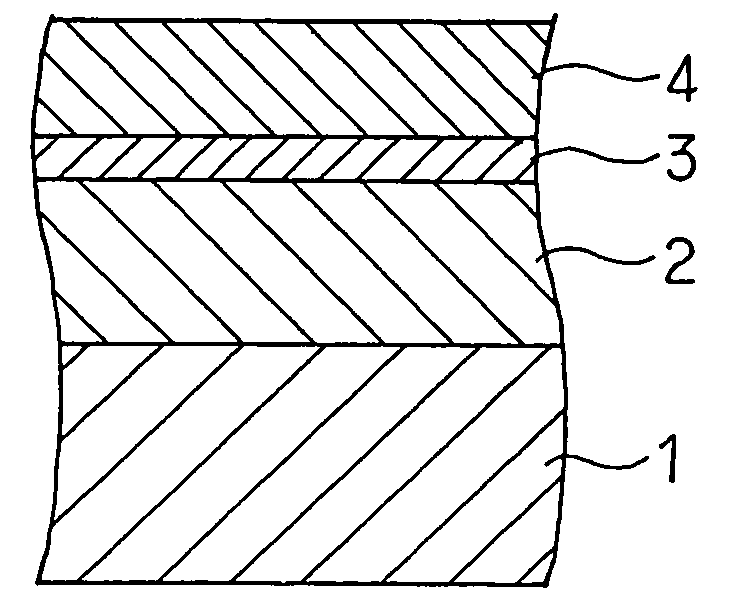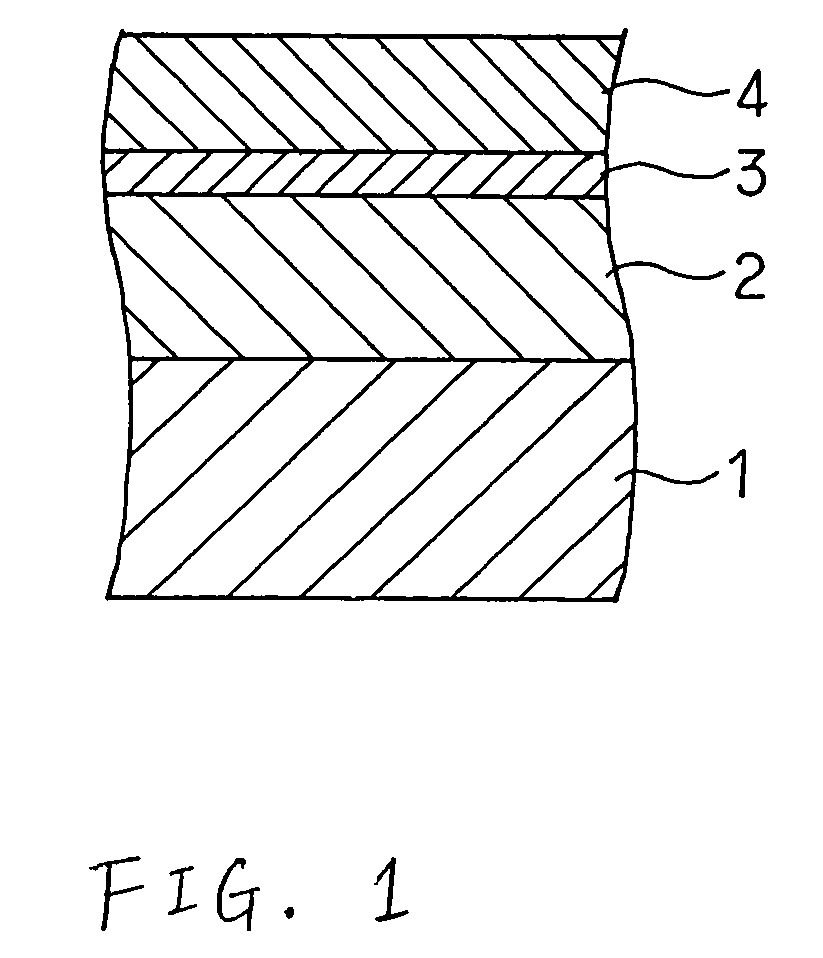Sliding member
a technology of sliding member and sliding plate, which is applied in the field of sliding plate, can solve the problems of inability to achieve the effect of improving wear resistance by hard particles, lack of elongation and inferior conformability of overlay layer, and inability to achieve the effect of improving wear resistan
- Summary
- Abstract
- Description
- Claims
- Application Information
AI Technical Summary
Benefits of technology
Problems solved by technology
Method used
Image
Examples
Embodiment Construction
[0025]Herein below, there will be described embodiments of the present invention.
[0026]As shown in FIG. 1, a bearing alloy layer 2 made of a Cu alloy or an Al alloy was formed on a back metal layer 1 made of a steel plate, an intermediate layer 3 was formed on the bearing alloy layer 2 by electroplating, and an overlay layer 4 was formed on the intermediate layer 3 by electroplating, whereby invention specimens 1 to 6 and comparative specimens 7 to 9 were obtained as shown in following Table 1. In this case, the thickness of the intermediate layer 3 was from 0.5 to 5 μm and the thickness of the overlay layer was from 5 to 15 μm.
[0027]With regard to the intermediate layer 3, there are shown those made of an elemental Ag and of a Cu alloy. In Table 1, the numeral attached to the atomic symbol representing the intermediate layer means the content (by mass %) of the element.
[0028]The matrix of the overlay layer 4 was pure Bi, and Si3N4 and Al2O3 were used as hard particles. The overlay ...
PUM
| Property | Measurement | Unit |
|---|---|---|
| particle size | aaaaa | aaaaa |
| thickness | aaaaa | aaaaa |
| thickness | aaaaa | aaaaa |
Abstract
Description
Claims
Application Information
 Login to View More
Login to View More - R&D
- Intellectual Property
- Life Sciences
- Materials
- Tech Scout
- Unparalleled Data Quality
- Higher Quality Content
- 60% Fewer Hallucinations
Browse by: Latest US Patents, China's latest patents, Technical Efficacy Thesaurus, Application Domain, Technology Topic, Popular Technical Reports.
© 2025 PatSnap. All rights reserved.Legal|Privacy policy|Modern Slavery Act Transparency Statement|Sitemap|About US| Contact US: help@patsnap.com


